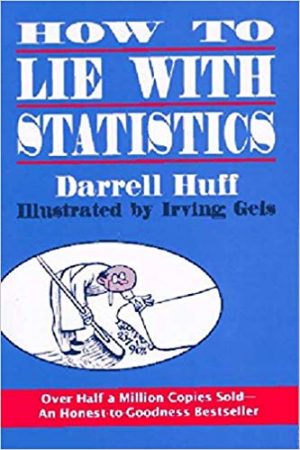Everywhere we go, we are presented with statistics about things to buy, things to do, the economy, politics, health issues, polls, wages, and more. But sometimes these statistics contradict each other, and what then?

How To Lie with Statistics by Darrell Huff
This famous little book by Darrell Huff is a humorous explanation of the ways truth is misrepresented with statistics. With example after example, most of them illustrated since so many statistical lies are visual, Huff shows what questions to ask when you see graphs, percentages, predictions, rates, marked maps, trends, and advertisements.
Without using mathematical language, Huff discusses sample bias, the different kinds of averages, uncertainties, the axis of graphs, bell curves, photography touch ups, and correlation vs causation. Finally, he sums it all up, giving five simple questions to ask of a statistic to determine whether or not the given conclusion is valid.
All high school students who absorb the lessons in How to Lie with Statistics will be better equipped to think logically and critically about whatever statistical ‘truths’ they confront. Knowing when one is being lied to is one of the most important lessons to pass on in our homeschools. This little book will help with the statistical aspects of that and does so in a humorous and memorable way.
Darrell Huff’s quotation of Mark Twain sums up the possible misuse of statistics quite well. “One gets such wholesale returns of conjecture out of such a trifling investment of fact.”
As an added feature, this book was first published in 1954 and brims with interesting historical details. In that sense it can also be considered a primary source document for post-World War II US history. It refers to elections, wages, the economy, society, transportation, racism, and so much more. For example, Lillian Gilbreth (the mother in Cheaper by the Dozen), the dangers of flying by air, and various ways of discussing average income all are mentioned. One can learn a lot about our current society by seeing what was relevant in the past.
Our teens enjoyed this book several times over the years and I suspect yours may as well, especially if they realize it counts for math, history, and critical thinking credits.
This is the kind of resource we use for high school math and science reading.
Disclosure: We borrowed How to Lie with Statistics from the library during our latest reading week and have given our honest opinions.

Leave a Reply